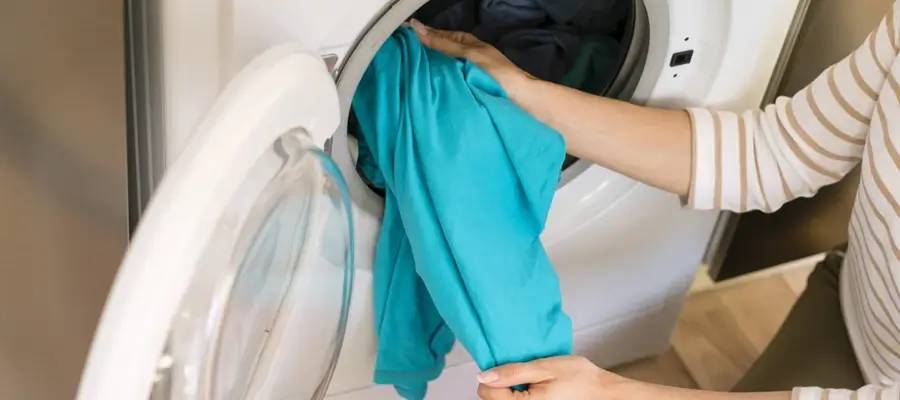Vented vs Non-Vented Dryers: What’s the Difference?

From Rocks to Bosch: A Brief History of Clothes Drying
In simplest terms, a dryer extracts water from clothing, either in a liquid or gaseous state.
Huh?
We may have lost you already. But that’s just a highfalutin way of saying there are three ways to dry your wet laundry. You can force the water out with pressure, let the water drain, or make it evaporate. Modern dryers use some or all of these methods.
Back in the day, you’d beat the laundry against a river rock before you hung the clothes to dry. This primitive but effective technology gave way to the roller press and eventually the spin cycles of modern washers and dryers.
How Your Dryer Dries Clothes
- Centrifugal force (we know, we know — centrifugal force is now considered fictitious): the spinning motion of the dryer pushes water out through the holes of the drum, where it drains away.
- Evaporation: The dryer’s heat turns water to steam, which exits through a vent. Have you noticed that clothes take much longer to dry on low heat? Less heat = less evaporation.
- Door number three, drainage: In some cases, a dryer may cool the steam so that it condenses to a liquid state and is drained or pumped out.
Confused? Let’s dig into the details.
To Vent or Not to Vent, That Is the Question
Vented and non-vented dryers differ in only one respect: how they dispose of moisture. That’s where the vent comes in. Remember door number three? We&’ll be circling back to that.
The one advantage that non-vented dryers hold over vented dryers is safety. There’s almost no risk of fire with a non-vented dryer, whereas vented dryers cause about 2,900 home fires every year, usually due to obstructed vents and lint traps.
What Is a Vented Dryer?
- If you live in the USA and own a dryer, there’s a strong probability it’s a vented dryer.
- Vented dryers push moisture and warm air through a vent to the outside. Flexible tubing connects the dryer to the vent.
- The downside of a ventilation system is that the vent can clog with lint. This forces the dryer to work extra-hard, raises your energy bill, and ultimately becomes a fire hazard.
- Clean the lint trap after every load of laundry. Allow the dryer to cool at least 15 minutes between loads.
- Check the venting regularly to ensure safe operation and avoid appliance repairs.
- If you can’t clean the vent yourself, call the pros once a year to vacuum the vent with commercial-grade equipment.
- Dryers that blow warm, moist air to the interior of your home are also vented but don’t pose the same risk of fire as a dryer hooked up to an exhaust vent.
What Is a Non-Vented Dryer?
Non-vented dryers dispose of moisture through a hose that empties into a drain or a reservoir.
- Steam is condensed to liquid and either pumped into a drain or stored in a bin. You&’ll have to empty the bin manually from time to time.
- While there’s no fire concern beyond the lint trap, the filters of non-vented dryers still need regular cleaning.
- In terms of operation, vented and non-vented dryers are nearly identical.
Vented or Non-Vented: Which Dryer Is Right for You?
If you’re in the market for a new dryer, your purchase comes down to more than brand and price.
Now we’ve introduced an exciting new element! Vented or non-vented!
The configuration of your home, apartment, or condo may influence your decision.
- Is there a vent connection? If not, a non-vented dryer or a dryer that vents to the interior of your home or apartment may be a good choice.
- Is there a drain? If so, a non-vented dryer becomes an attractive option. If not, you can still purchase a non-vented dryer, but only if that dryer collects water in a bin that you’ll empty between loads.
There are so many things to consider.
- Brand
- Price
- Features
- Electric or gas
- Vented or non-vented
- New or used
At West Coast Chief Repair, we know a thing or two about dryers and are always happy to talk to customers and offer our recommendations.
Call us. We don’t charge for advice. We also sell and install appliances and can set you up with a dryer that’s perfect for your home, budget, and lifestyle.
More Articles
0 Comments